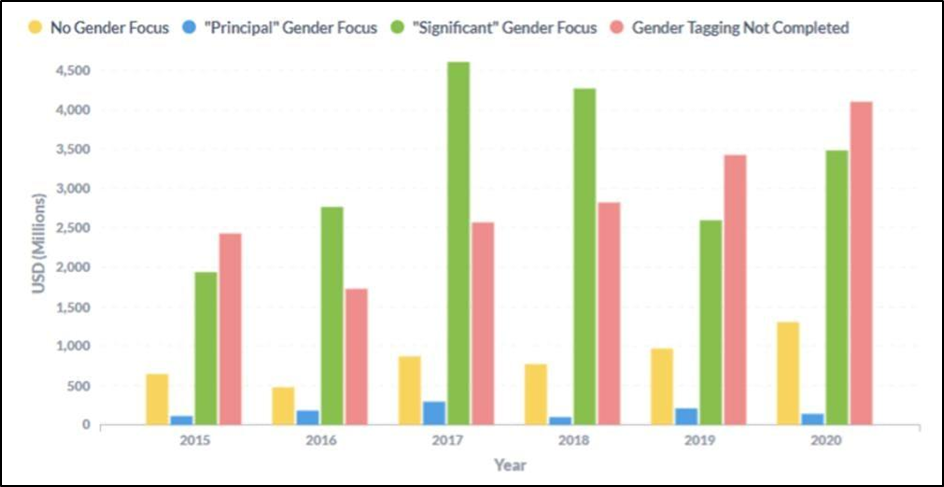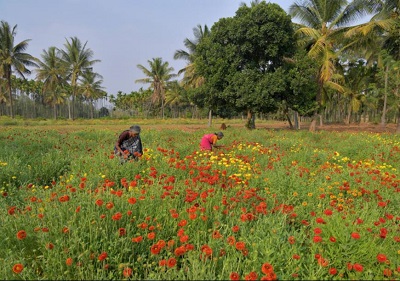Context-
Climate change poses a grave threat to agricultural production, severely impacting food security worldwide. While climate change is a universal challenge, its impacts are disproportionately felt by women, who are increasingly forming a larger part of the agricultural workforce in the Global South. This trend, known as the feminisation of agriculture, underscores the critical need to empower women to enhance productivity and ensure food security.
The Gendered Impact of Climate Change on Agriculture
- Feminisation of Agriculture : Women constitute about 43 percent of the global agricultural workforce. In South Asia, more than two-thirds of employed women work in agriculture, and in eastern Africa, over half of the farmers are women. Despite their substantial involvement, women’s productivity in agriculture lags behind men’s by 20 to 30 percent. This productivity gap is concerning, especially given the increasing reliance on women in agriculture and its implications for food security.
- Economic Benefits of Closing the Gender Gap : A 2023 report by the Food and Agriculture Organisation (FAO) highlights the economic potential of closing the gender gap in agricultural productivity. Achieving parity could boost global GDP by US$ 1 trillion and reduce food insecurity for approximately 45 million people. Therefore, empowering women in agriculture is not only a matter of social justice but also of economic and food security.
Drivers and Implications of Feminisation in Agriculture
- Out-Migration and Dual Livelihood Strategies : One significant driver of the feminisation of agriculture is the out-migration of men seeking urban employment opportunities, leaving behind a workforce vacuum in rural areas. Additionally, climatic challenges like heat waves negatively impact crop production, prompting men to diversify their income sources. As a result, many South Asian rural households adopt dual livelihood strategies, relying on both farming and migrant wage work to meet their economic needs.
● Polarised Views on Feminisation
The discourse surrounding the feminisation of agriculture is highly polarised. On one hand, it is seen as a positive development, enhancing women’s agency, decision-making power, and asset ownership, challenging traditional gender roles. On the other hand, it is also associated with agrarian distress, influenced by economic and sociocultural factors. Women face significant challenges such as limited access to land ownership, agricultural technology, and information, which are exacerbated by climate change.
The Nexus of Feminisation, Climate Change, and Food Security
- Women’s Dependence on Natural Resources : Women depend heavily on natural resources crucial for agriculture, such as water and fuel, making them particularly vulnerable to climate change. Climate-induced factors increase their workload, especially in unpaid domestic and care duties, which women spend an average of four hours a day on compared to less than two hours for men. Consequently, climate change exacerbates pre-existing gender inequalities, posing severe threats to achieving food security in terms of availability, accessibility, utilisation, and system stability.
- Impact of Climate Change on Female-Headed Households : A 2024 FAO report titled "The Unjust Climate" reveals that female-headed households experience greater income losses due to climate events compared to male-headed households. For instance, heat stress causes an 8 percent higher income loss and floods cause a 3 percent higher loss for female-headed households. If global temperatures rise by 1°C, these households could face a 34 percent greater income reduction compared to male-headed households. These disparities highlight the urgent need to address gender-specific vulnerabilities in agriculture.
Gender Disparities in Climate Finance and Policy
- Despite the critical role of climate finance, only 3 percent of the allocated funds are directed towards the agricultural sector, with an even smaller fraction earmarked for adaptation efforts. An analysis of the Nationally Determined Contributions (NDCs) of 24 countries found that of over 4,000 explicit climate actions, only 6 percent mentioned women, indicating a significant gap in gender mainstreaming within climate policy frameworks.

Source-OECD- Climate finance in Agriculture
Strategies for Empowering Women in Agriculture
- Strengthening Land Ownership Rights : Globally, women produce 45-80 percent of the food supply yet own less than 10 percent of the land. Policies aimed at addressing gender disparities in land ownership rights are crucial. Secure land tenure grants women access to government schemes and enhances their role in household decision-making. Furthermore, land ownership enables women to access credit, further empowering them economically.
- Providing Access to Technical Resources : A UN study indicates that women can increase agricultural yields by 20-30 percent when provided with the same resources as men, potentially reducing hunger by 12-17 percent. Targeted training programs for women farmers, enabling them to adopt Climate-Resilient Agriculture (CRA) practices, are essential. These programs can help women implement improved agricultural techniques, enhancing productivity and sustainability.
- Enhancing Digital and Financial Literacy : Efforts to bridge the gender gap in digital and financial literacy are critical. Women's participation in decision-making and access to information and resources are vital for the successful adoption of Climate-Smart Agriculture (CSA) approaches. Empowering women with the necessary knowledge and skills equips them to adapt to climate change and contribute to sustainable agricultural practices.
- Increasing Gender-Specific Climate Financing : Climate finance directed towards agriculture has the potential to narrow the gender gap in productivity. Given the existing shortfall in climate financing for agriculture, adopting a gender-focused approach can maximise its effectiveness. This approach addresses gender disparities, boosts productivity levels, and makes women in agriculture more resilient to climate change threats, positively impacting food security.
Conclusion
Empowering women in agriculture is crucial for boosting productivity levels and ensuring food security, particularly under the looming threat of climate change. Women’s substantial contributions to agriculture and their heightened vulnerability to climate impacts necessitate a gender-focused approach. Strengthening land ownership rights, providing access to technical and financial resources, and increasing gender-specific climate financing are essential strategies.
As we confront the challenges posed by climate change, empowering women in agriculture offers a pathway to sustainable development and resilience. By addressing gender disparities and enhancing women's capabilities, we can improve food security, foster economic growth, and promote a more inclusive and equitable agricultural sector.
|
Probable Questions for UPSC Mains EXam-
|
Source- ORF







